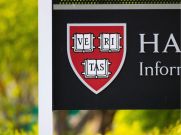This article originally appeared at the Hartford Courant.
As a faculty member at Central Connecticut State University, I recently looked at the school's affirmative action plan for this academic year, which is designed to achieve “hiring and/or promotional goals to remedy the underutilization of protected classes ... and to reach parity with the availability base of protected groups in relevant labor market areas.”
What this means, in plain English, is hiring a faculty that is racially, ethnically and by gender identical to the labor market. As long as it is not, the plan would misguidedly suggest, something is wrong, injustice exists and the percentages must somehow be remediated.
The university hopes, for example, to hire, at the rank of associate professor, two black males, three black females, one Hispanic male, three Hispanic females, and one Female AAIANHNPI (Asian, American Indian, Alaska native, Hawaiian native, Pacific islander). It also seeks to promote to the same rank two black females, two Hispanic females and one female AAIANHNPI. Left unanswered is why other ethnic and racial categories are not deserving of the university’s solicitude.
This kind of racial and ethnic bean counting — which is extolled on virtually all of the plan’s 823 pages — is not limited to faculty. The university’s obsession with achieving just the right mix of women, men, blacks, Hispanics, and AAIANHPI applicants on its instructional faculty has metastasized into goals based exclusively on race, gender and ethnicity that are applied in every employment category in the university, including secretarial and clerical personnel, the police force and skilled craftsmen. The custodial staff, the plan informs us, should be altered by the employment of two black males, two black females, one Hispanic male and one male AAIANHPI.
To be sure, there are factors beyond the university’s control, such as the pool of applicants, that have prevented it from achieving its goals in the past. Many white males, myself included, have been hired and promoted since I came to CCSU on a one-year visiting appointment in 1990. But, according to the university, every search committee for every position it seeks to fill cannot consist exclusively of white males. This is because our innate intolerance and bigotry are apt to skew our professional judgment, and for that reason “a member of an underrepresented group” must be included on the committee to keep our evil tendencies in check.
What is most objectionable about the plan is that it inevitably influences not just the process by which its goals are achieved, but the results as well. Its very existence — not to mention the critical importance university administrators ascribe to it — pressures faculty and administrators to discriminate against applicants the plan disfavors on the basis of characteristics, such as skin color, over which applicants have no control and which are in no way indicative of their accomplishments and abilities as individuals.
To think that race, gender and ethnicity play no role in the deliberations of search and promotion committees is naive.
It pains me deeply that my university and hundreds of others around the country practice discrimination on the basis of race, ethnicity and gender. It pains me even more that my university and others disguise the discrimination they practice under the misleading euphemism of "affirmative action." And what may be most infuriating about the discrimination that occurs when some are given preference over others is that it makes nonsense of the publicly proclaimed commitment of many universities, as CCSU describes it, to “non-discrimination in education and employment.”
I have no doubt that those who conceived and wrote CCSU’s affirmative action plan have the best of intentions, and that they consider the cosmetic diversity they seek to achieve by the plan pedagogically wise.
But to me, cosmetic diversity misses the point; the only kind of diversity that matters in higher education is intellectual diversity.
But regardless of what one thinks of “diversity,” the fact remains that discrimination is discrimination regardless of whom it benefits and whom it victimizes. Paraphrasing the chief justice of the United States Supreme Court, the way to end it is by ending it.
Doing so would go a long way toward fulfilling the noble objectives of the civil rights movement in America.
Jay Bergman is a professor of history at Central Connecticut State University and a member of the board of directors of the National Association of Scholars, an organization of academics and others opposed to affirmative action preferences.
Image Credit: Public Domain













